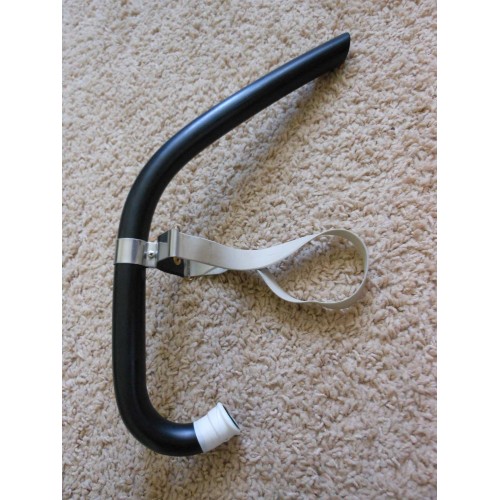David Wilson
Contributor
Thanks for the likes, Angelo and Luis. And for the posts, Pete and Iowwall.
Let us move on to Nemrod breathing tubes, starting today with the early models. The following from 1948:
 The illustration above shows four snorkels in all. Let us examine them one by one, starting with the model on the far right:
The illustration above shows four snorkels in all. Let us examine them one by one, starting with the model on the far right:
 Caption: "Respirador metálico con boya". So a snorkel with a metal barrel (probably aluminium alloy for the sake of lightness). The top terminates in a downwards curve with a ball valve to float upwards and seal the barrel opening when the tip of the snorkel dips below the surface. The bottom of the barrel connects to a tube with a lugged flange mouthpiece on one end and what looks like a drain valve on the other.
Caption: "Respirador metálico con boya". So a snorkel with a metal barrel (probably aluminium alloy for the sake of lightness). The top terminates in a downwards curve with a ball valve to float upwards and seal the barrel opening when the tip of the snorkel dips below the surface. The bottom of the barrel connects to a tube with a lugged flange mouthpiece on one end and what looks like a drain valve on the other.
In 1955, this snorkel received the stock number PS-2019:
 Here it is again in 1960:
Here it is again in 1960:
 So now we see the breathing tube in colour. The rubber parts are likely those in red, namely the mouthpiece and the ball valve "cage", which may have originally been a metal construction. Note the presence of the snorkel keeper on the barrel, reading for the mask strap to be threaded through.
So now we see the breathing tube in colour. The rubber parts are likely those in red, namely the mouthpiece and the ball valve "cage", which may have originally been a metal construction. Note the presence of the snorkel keeper on the barrel, reading for the mask strap to be threaded through.
Let us move on to Nemrod breathing tubes, starting today with the early models. The following from 1948:
In 1955, this snorkel received the stock number PS-2019:




